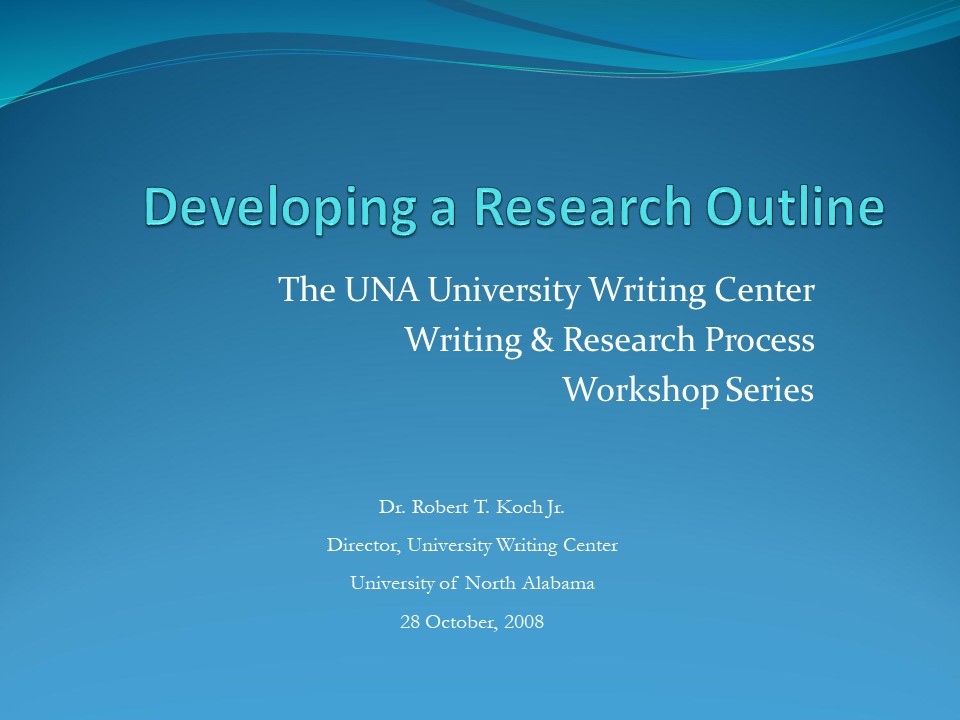Developing a Research Outline PowerPoint PPT Presentation
1 / 11
Title: Developing a Research Outline
1
Developing a Research Outline
- The UNA University Writing Center
- Writing Research Process
- Workshop Series
Dr. Robert T. Koch Jr. Director, University
Writing Center University of North Alabama 28
October, 2008
2
Goals
- Understand the basics of an outline
- Understand strategies for organizing an argument
- Understand how to build academic paragraphs that
support argument
3
Outline Purpose and Characteristics
- Lays out the structure of your argument,
including the complete thesis. - Can be simple or detailed (the more detailed, the
better). - Uses a number and/or letter system.
- Uses indentation.
- Is never immutable! (Research involves change!)
4
Organizing an Argument
- Rhetorical Triangle (Logos, Ethos, Pathos)
- Common Ground / Background / Definition
- Patterns of Organization What is needed?
- Problem Solution
- Classification Division
- Cause Effect
- Compare Contrast
- Illustration
- Process
5
General Structure in Academic Research
- Introduction What is the problem and
significance? - Review of Literature What has happened so far?
- Methodology How did you conduct your study?
- Findings What did you discover?
- Discussion What does this discovery mean?
- Conclusion What should be done next?
- References
6
Paragraph Parts
- Claim (Topic or Summarizing Sentence)
- Your assertion -- it ties to the overall
argument and thesis - Evidence
- Secondary sources Introduction, Review of
Literature, Methodology, Discussion, Conclusion - Primary Sources -- Findings
- Discussion
- Builds the connection among Evidence , Claim, and
Thesis
7
Outline Strategy - Introduction
- Use the required components of the general
structure as your starting outline. - Introduction
- Establish the Problem
- Establish significance
- Why is it a problem
- Who is it a problem for?
- Thesis
8
Outline Strategy Review of Literature
- Review of Literature
- The terms of the discussion
- How are terms defined? Who has defined them this
way? - Common ground
- What are the agreed upon problems?
- What findings tend to agree upon solutions?
- Divergent findings
- What differences have been uncovered?
- What competing solutions have been offered?
9
Outline Strategy Methodology
- Explain it so the study can be repeated
- What or who was studied?
- How were they studied?
- What instruments were used?
- What time frame?
- How was data analyzed?
- What are the limitations?
10
Outline Strategy Findings
- Statements of factual discovery No opinions or
interpretations - What did the data show?
- Tables
- Graphs
- Maps,
- Charts
- Dont repeat whats easily shown in the table.
Say it once concisely.
11
Outline Strategy Discussion Conclusion
- What do the findings mean?
- What are Solutions to the problem?
- If solutions compete, which is best and why?
- Conclusion
- What course of action is required?
- What are the limitations of the study?

